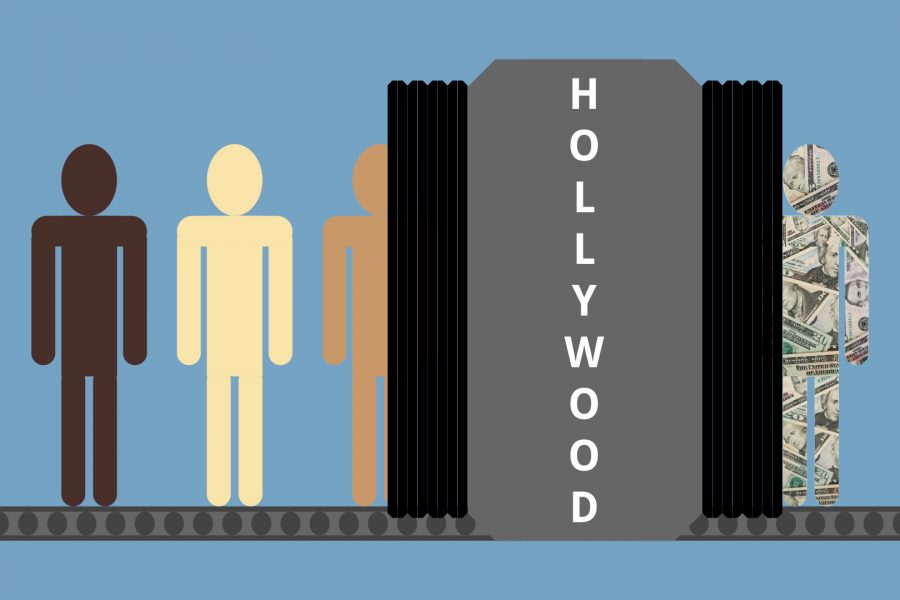As part of a generation that has pushed for more diversity in media, I find it strange that I now play the devil’s advocate and cringe at the thought of using my ethnicity as part of a sales pitch.
I’m not saying that it’s wrong that we’ve had more representation and support for people of color, strong women, and people in the LGBTQ community in media. Over the last three years, these groups have had massive amounts of coverage in cinemas including films such as “Black Panther,” “Us,” “The Lion King (2019),” “Captain Marvel,” “Love Simon,” “Aladdin (2019),” “Hidden Figures,” “Wonder Woman (2018),” “Coco,” “Oceans 8,” and “Ghostbusters (2016).” However, among these titles, the ones that receive the most praise and the most profit are those that have casts filled with people of color.
Even with upcoming movies, the shock value of a person of color being given a role traditionally given to Caucasians is being subtly used as a marketing tactic. For instance, “The Little Mermaid” having an African-American woman cast to be the new Ariel gave the remake of the classic Disney film a massive boost in publicity. People share and tweet about how they’re either excited or outraged. Everyone hears about it, and the movie gets both traction and free advertising because all anyone ever talks about is the amount of color on-screen.
Another example of this is “Crazy Rich Asians.” When it was released, people were flocking to theaters to see the awesome new romance movie with an all Asian cast. I was never really into that genre, so I asked around about what made it so great and why it might actually be worth watching. It was always the same thing: “It has an all Asian cast.”
Personally, I would define a good movie as one that could cast anyone into the roles without it really affecting the plot. The exceptions to this rule are movies that use race to prove a point or movies that display specific qualities in different cultures. Take, for example, the films “Get Out” and “Coco.” They’re two very different sides of the film spectrum, but the casting is incredibly important to get a message across. “Get Out” relays the fear of being African-American in America while showing how non-people of color are following black culture because it’s trendy. “Coco,” on the other hand, is a movie that focuses on a Latino boy running around the land of the dead during Dia De Los Muertos.
With these two movies, you can’t get the same kind of experience without proper casting. Characters in “Get Out” must be African-American, and characters in “Coco” must be Latinx in order for things to work. In either of these cases, though, ethnicity played a very basic role in marketing. No one had to think too much or be so fantastically pleased about seeing a movie with people of color being cast.
With “Crazy Rich Asians,” though, the ethnicity had almost no importance to the plot, but it was its biggest selling point. If we were to take the movie and swap the title, the setting, and some scenes with any culture other than American, people would realize it really isn’t all that great. It’s a Mad Lib with the spaces being filled in with Mandarin.
I’m willing to say that it was an entertaining movie, but overall, it really was just two hours of a family in Singapore with an insane amount of fame and money. Upon talking to some other film enthusiasts about how I felt, they mentioned that they liked how the characters were treated as normal people – without stereotypical attributes or anything “foreign.” I would like to disagree. If they were treated like normal people, I should have been able to relate and sympathize with them in some way, especially as an Asian woman. Instead, all I can think of is Ken Jeong faking an accent for shits and giggles, and the intensity of playing mahjong with your elders.
This being said, I think a good example of a romance movie with Asians is Netflix’s “Always Be My Maybe.” I chose this title for the exact same reason mentioned prior: the Asian characters are just normal people. Just like in “Crazy Rich Asians,” one half of the couple is average, and the other half is rich and famous. However, their race isn’t really played on, and they feel like real people. They have issues that they work out without glitz and glamour. They both try to work on their interests and careers while balancing their developing relationship. They even have the falling out that all romantic films must have, but it’s written in a way that somehow feels much more grounded. The fact that the main cast is Asian and has a token Keanu Reeves is a pure bonus.
I would like to say that I’m glad that we’re getting a lot more representation in theaters, but it’s at the cost of the art of film losing its very soul. Filmmakers are trying too hard to please a single request rather than appealing to those who want more than seeing the color of their skin make millions. At the end of the day, I need a good movie first and a good movie with Asians second.


